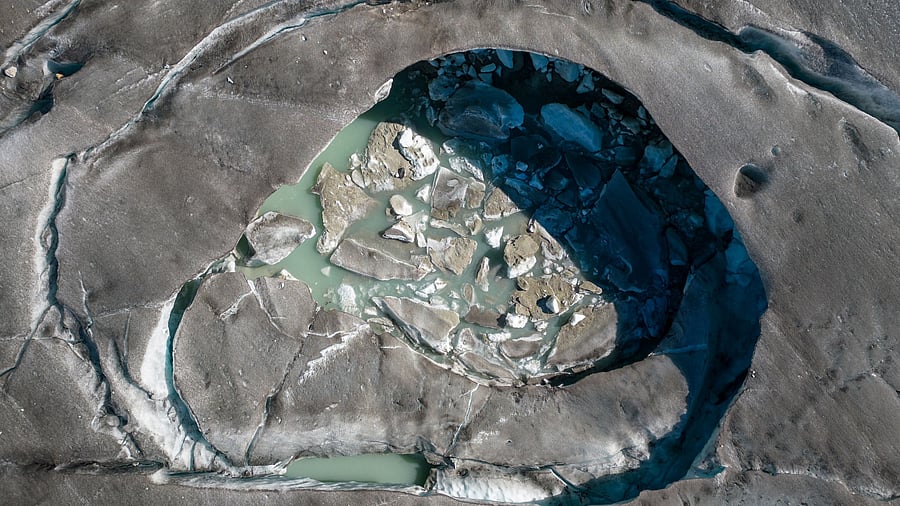
Representative image of glacier melting.
Credit: Reuters File Photo
Srinagar: The rapid melting of glaciers in Jammu and Kashmir has worried experts who fear it would impact the water availability in the Himalayan region with consequent adverse effect on the dependent livelihoods.
The Jammu and Kashmir Himalayas hosts some of the largest glaciers in the Hindu Kush region. The Kolahoi glacier is the biggest in Kashmir and is the main source of water for the river Jhelum.
But a study has shown that the Kolahoi glacier has lost 23 per cent of its area since 1962 and has fragmented into smaller parts.
Experts said unprecedented increase in temperature, deforestation, increasing human activity, especially around Kolahoi glacier and high levels of pollution caused by the emission of greenhouse gases by vehicles and cement plants are major reasons for retreating of Kolahoi glacier.
Around 70 per cent of Kashmir’s population earns livelihood through farming. Most of the region’s agricultural land depends on the snowmelt that feeds streams and rivers. Therefore, the recession of glaciers translates into a direct impact on the socio-economic sector of the region.
According to official figures Kashmir has lost 30,000 hectares of agricultural land in the last decade. Official records show that in 2012-13, the land under paddy in Kashmir was 1,62,309 hectares. In 2021-2022, the land under paddy cultivation was 1,34,067 hectares.
“There are 18,000 glaciers in Jammu, Kashmir and Ladakh, but all of them are melting. The glaciers are melting in the entire Himalaya including J&K. In the past couple of years, the melting of glaciers has increased,” said Earth scientist and glaciology expert Prof Shakil Romshoo.
He said the record melting of glaciers was witnessed last year and this year it was a bit lower than previous year.
Prof Romshoo believes that record melting of glaciers is the outcome of less snowfall in winters. “The melting of snowfall has increased as the temperature remains usually high in February, March and the heat wave starts in April,” he said.
Scientists have long warned that warming temperatures linked to climate change are eating into glaciers and ice sheets around the world, driving rising sea levels, floods and droughts.
Dr Irfan Rashid, an Assistant Professor of Department of Earth Sciences at University of Kashmir, says according to research there will be a 4-7 degrees increase in temperature by the end of this century “and melting of glaciers can’t be stopped.”
“Unless we become carbon neutral, melting of glaciers can’t be stopped. The carbon emission is increasing, global emission is also high,” he said.